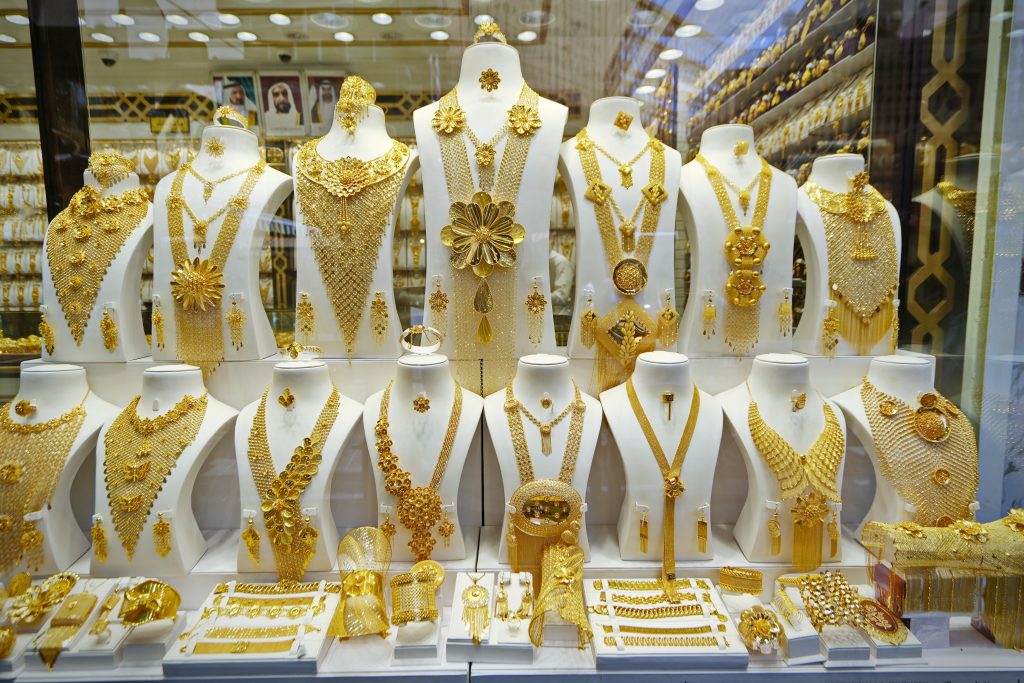Culture deeply influences purchasing decisions, shaping consumer behavior through shared values and norms. From luxury goods as status symbols to cultural missteps in global campaigns, marketers must navigate these nuances. By localizing strategies and using tools like biosensors, brands can avoid pitfalls, respect traditions, and align with diverse cultural expectations
Table of Contents
- What Makes Culture a Powerful Influence on Purchasing?
- 10 Steps to Avoid Cultural Mistakes in Marketing
- 1. Conduct Thorough Cultural Research
- 2. Localize, Don’t Just Translate
- 3. Engage Local Experts and Cultural Consultants
- 4. Use Cross-Cultural Training for Teams
- 5. Test Campaigns with Focus Groups
- 6. Be Aware of Cultural Symbolism
- 7. Be Respectful of Local Traditions and Values
- 8. Avoid Stereotypes
- 9. Be Prepared for Adaptation
- 10. Embrace Local Partnerships and Spokespeople
- Leveraging Biosensors to Preempt Cultural Pitfalls in Marketing
- References:
- Free 52-page Human Behavior Guide
Wouldn’t it be great if we were all alike? If everyone liked the same products, and our purchasing decisions were shaped by identical cultural influences? No, it really wouldn’t, but it would make the life of neuromarketers much much easier.
One of the key challenges in understanding consumer behavior within a globalized market is navigating the complexities of culture. Culture is an obscure network of shared beliefs, values, behaviors, and biases, and it plays a critical role in shaping how consumers perceive and interact with products. For neuromarketers and businesses, this cultural framework represents both a great opportunity and a potential barrier when it comes to accurately assessing the purchasing decisions of a specific demographic.

Of course history is littered with fun, but cautionary tales of failed product launches that failed to take into account that the product, and marketing, would be switching to another country and culture. From when horrible mistranslations sank soft drink dreams in China, to car launches in South America that went off the road – so to speak. This is a rabbit hole I invite you down into with pleasure.
However, such blunders are not inevitable. The common denominator between these failed product launches is that they could have been easily avoided. The main mistake these marketing teams made was to think that a product could be launched globally as a multi-language one-size-fits-all campaign, when it really (obviously) could not.
In this article we will take a look at why culture is such a fickle thing to navigate as a marketer, and what consideration one should make before launching a product anywhere in the world.
What Makes Culture a Powerful Influence on Purchasing?
Culture plays a crucial role in shaping what is considered prestigious or desirable in a society. Purchasing decisions often reflect aspirations for social status, driven by cultural norms. Consumers across various cultures frequently seek luxury goods, designer brands, or cutting-edge technology, not just for their functional benefits but as symbols of status. This behavior, known as “conspicuous consumption,” was first described by Thorstein Veblen in The Theory of the Leisure Class (1899), where people display their wealth to communicate social standing.
Cultural norms heavily influence what products are viewed as prestigious. For example, in societies where material wealth is highly valued, owning luxury items like high-end cars or branded clothing serves as a marker of success. It is often the case that cultural expectations define which goods are seen as symbols of status, shaping purchasing behaviors accordingly.
Products often carry symbolic meanings beyond their practical use. As Jean Baudrillard explained in The System of Objects (1996), many consumer goods are imbued with social and cultural significance. For instance, a luxury car or designer clothing can represent power, wealth, or social prestige. This “symbolic consumption” allows individuals to signal their affiliation with a particular class or group.

Cultural contexts also influence how conspicuous consumption is displayed. In some societies, overt displays of wealth are celebrated, while in others, modesty is valued. Pierre Bourdieu’s concept of “cultural capital,” outlined in Distinction: A Social Critique of the Judgment of Taste (1984), illustrates how individuals use consumption to navigate social distinctions and align with cultural norms.
10 Steps to Avoid Cultural Mistakes in Marketing
To prevent falling into cultural pitfalls when marketing a product in a specific cultural setting, marketers can take several key steps to ensure their strategies resonate with the target audience while avoiding misunderstandings or negative perceptions. Here’s what they can do:
1. Conduct Thorough Cultural Research
Marketers should invest time in understanding the cultural nuances, values, traditions, and social norms of the target market. This includes researching the language, religion, customs, and taboos that may affect how a product is perceived. In-depth cultural analysis can reveal sensitivities around certain symbols, colors, or messaging that might otherwise be overlooked.
- Example: In many Middle Eastern cultures, certain hand gestures and colors have specific connotations. What might seem innocuous in one culture could be offensive or misinterpreted in another.
2. Localize, Don’t Just Translate
Marketing messages should be localized rather than simply translated. Direct translations often fail to capture the nuances of a culture, leading to miscommunication. It’s essential to adapt the tone, style, and cultural references in advertisements and product names to resonate with the local audience.
- Example: When KFC entered the Chinese market, their slogan “Finger-lickin’ good” was translated to “Eat your fingers off,” a clear cultural misstep. Localizing the messaging would have prevented this blunder.
3. Engage Local Experts and Cultural Consultants
Partnering with local cultural experts or consultants can help identify potential pitfalls and ensure that marketing strategies align with local values. These experts can provide insights into how certain products or advertisements may be received by the local population and can help refine campaigns to avoid cultural faux pas.
- Example: Hiring local agencies in Japan helped Starbucks incorporate Japanese aesthetics and cultural preferences into their store design and marketing materials, contributing to the brand’s success.
4. Use Cross-Cultural Training for Teams
Teams involved in the marketing campaign should receive cross-cultural training to understand the target culture’s key characteristics and potential sensitivities. This training can help prevent mistakes that could arise from a lack of cultural awareness.
- Example: Coca-Cola conducts cultural training for its employees working on international campaigns to better understand the market’s values, religious practices, and social norms.
5. Test Campaigns with Focus Groups
Before launching a campaign, it’s wise to test it with local focus groups to gather feedback on how the messaging, visuals, and products are received. This provides a real-world check on whether the campaign resonates or risks alienating the audience.
- Example: Unilever used focus groups in India to better understand how rural communities might perceive personal hygiene products, ensuring the campaign was culturally relevant and well-received.
6. Be Aware of Cultural Symbolism
Pay close attention to symbols, imagery, and colors, as they can carry different meanings in different cultures. For example, certain colors might signify celebration in one culture but mourning in another. Using culturally sensitive symbols ensures that the product or message does not unintentionally offend or mislead consumers.
- Example: In China, white is traditionally associated with mourning, so marketers would avoid using this color for celebratory or festive promotions.
7. Be Respectful of Local Traditions and Values
Marketers must ensure their campaigns show respect for local customs, religious practices, and values. Insensitivity to these factors can lead to backlash, even if the intention was harmless. Understanding and aligning marketing efforts with local traditions can build brand trust.
- Example: In Muslim-majority countries, fast-food chains like McDonald’s offer Halal-certified food to respect local dietary laws, ensuring their products are culturally acceptable.

8. Avoid Stereotypes
Marketers should steer clear of cultural stereotypes, which can alienate or offend the target audience. Instead, they should focus on authentic representations of the culture, highlighting positive and diverse aspects that resonate with the local population.
9. Be Prepared for Adaptation
Flexibility is essential in international marketing. Marketers should be prepared to adapt their strategies based on feedback and evolving cultural dynamics. Markets change, and cultural preferences may shift over time, so it’s important to remain agile.
10. Embrace Local Partnerships and Spokespeople
Collaborating with local celebrities, or organizations can provide cultural legitimacy to the marketing campaign. These partners often have a deeper understanding of the audience and can guide the brand in navigating cultural nuances effectively.
Leveraging Biosensors to Preempt Cultural Pitfalls in Marketing
The overarching mantra of navigating cultural differences in new markets is to always (always) test within the target demographic. If you’re marketing to the Italian market, don’t rely on data collected in Spain, etc. While this might seem an arduous task, a surefire way to lighten the data collection effort and gain deeper insights is to employ biosensors in the consumer testing phase of your launch plan. Biosensors offer marketers valuable insights into cultural nuances by measuring consumers’ physiological and emotional responses to marketing campaigns. These tools-such as eye-tracking, galvanic skin response (GSR), EEG, and facial expression analysis-provide real-time, objective data, helping marketers refine their strategies to avoid cultural pitfalls (McDuff et al., 2015; Ravaja, 2004).
Biosensors can enhance cultural research by revealing how consumers from different cultures react to specific symbols, colors, and imagery. They also help marketers test the emotional impact of localized content, ensuring it resonates with the target audience (Lewinski et al., 2014). By combining biosensor data with cultural consultants’ insights, marketers can better understand how consumers respond on a subconscious level (Cowley et al., 2016).
In focus groups, biosensors bypass social desirability bias, capturing hidden emotional responses that traditional methods may miss (Mauss & Robinson, 2009). They can also detect whether cultural symbols evoke discomfort or confusion, allowing marketers to adjust their campaigns accordingly (Kivikangas et al., 2011). Furthermore, biosensors help assess how well campaigns respect local traditions and values by measuring positive or negative emotional engagement.
By using biosensors, marketers can avoid stereotypes, adapt their campaigns based on real-time feedback, and measure the effectiveness of local influencers in connecting with their audience (McDuff et al., 2015). This biometric data enables brands to be agile and culturally responsive, creating marketing strategies that align with consumer expectations and cultural norms. Overall, biosensors are a powerful tool for refining campaigns and ensuring cultural relevance in diverse markets.
References:
- Veblen, T. (1899). The Theory of the Leisure Class. Macmillan.
- Baudrillard, J. (1996). The System of Objects. Verso.
- Bourdieu, P. (1984). Distinction: A Social Critique of the Judgment of Taste. Harvard University Press.
- Cowley, B., Kivikangas, J. M., Järvelä, S., & Ekman, I. (2016). Electrophysiology of emotion and motivation in usability testing. Journal of Ambient Intelligence and Smart Environments, 8(4), 405-421. https://doi.org/10.3233/AIS-160394
- Kivikangas, J. M., Chanel, G., Cowley, B., Järvelä, S., Ekman, I., Salminen, M., & Ravaja, N. (2011). A review of the use of psychophysiological methods in game research. Journal of Gaming & Virtual Worlds, 3(3), 181-199. https://doi.org/10.1386/jgvw.3.3.181_1
- Lewinski, P., Fransen, M. L., & Tan, E. S. (2014). Predicting advertising effectiveness by facial expressions in response to amusing persuasive stimuli. Journal of Neuroscience, Psychology, and Economics, 7(1), 1–14. https://doi.org/10.1037/npe0000012
- Mauss, I. B., & Robinson, M. D. (2009). Measures of emotion: A review. Cognitive Science, 23(2), 209-237. https://doi.org/10.1111/j.1467-8721.2009.01555.x
- McDuff, D., El Kaliouby, R., Cohn, J. F., & Picard, R. W. (2015). Predicting ad liking and purchase intent: Large-scale analysis of facial responses to ads. IEEE Transactions on Affective Computing, 6(3), 223-235. https://doi.org/10.1109/TAFFC.2015.2396537
- Ravaja, N. (2004). Contributions of psychophysiology to media research: Review and recommendations. Media Psychology, 6(2), 193-235. https://doi.org/10.1207/s1532785xmep0602_4
Free 52-page Human Behavior Guide
For Beginners and Intermediates
- Get accessible and comprehensive walkthrough
- Valuable human behavior research insight
- Learn how to take your research to the next level












